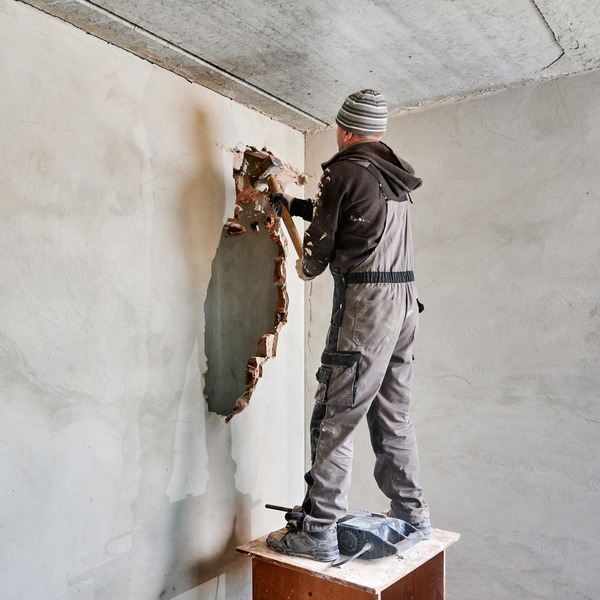Property damage from unexpected events like storms, floods, fires, and earthquakes can lead to considerable problems for homeowners and businesses. Traditional methods might delay damage assessments and recovery operations. Fortunately, advancements in technology provide tools and systems that make assessing and recovering from property damage faster, safer, and more accurate than ever.
How Can Tech Innovations Aid in Property Damage Recovery?
The effective utilization of technology in property damage assessments and recovery involves using drones, mobile apps, sensors, digital documentation, and specialized software programs. Technology aids in data gathering, processing, remote communications, and digital record-keeping. The combination of these resources ensures quicker assessments, improved safety, precise data collection, and more efficient recovery processes.
Drones for Quick Damage Inspection
Drones are useful for rapid aerial surveys right after property damage occurs. Equipped with high-resolution cameras, drones can capture clear images and video from various angles. This reduces the time and human resources needed for assessing extensive damage.
Drones also improve safety by inspecting areas inaccessible or hazardous for human inspectors. Using drones reduces risk, lowers costs, and provides quick access to accurate visual information for decision-making. Their visual data can speed up the insurance claims process due to the validity and clarity of drone footage.
Mobile Applications and Digital Platforms
Mobile apps designed for damage assessment allow technicians and property owners to document damages instantly. These smartphone apps can capture images, record videos, and document notes about the damage location and extent. Data can be directly uploaded to cloud platforms for further processing and sharing among stakeholders.
Additionally, some digital platforms integrate photos, notes, and documents within an organized, user-friendly interface. This streamlines the collaboration among insurance companies, restoration teams, and affected parties. The platform’s connectivity ensures all stakeholders remain informed, ensuring swift action and transparency.
Advanced Software for Data Management and Reporting
Damage assessments involve vast amounts of written, photographic, and geographic data. Advanced software ensures this data remains organized, secure, and accessible. Property assessment software can generate useful reports with accurate measurements, detailed images, and clear analysis of the damage.
Insurance providers, restoration companies, and property owners benefit from clear, digital reporting. Reports generated by software tools foster effective communication between parties and lead to prompt claims processing. Streamlined data processing speeds repair approvals, reducing downtime and disruption after a damaging event.
Cloud Solutions for Document Storage and Collaboration
Cloud-based systems offer secure and centralized document storage, accessible remotely by multiple users. Essential documents like damage reports, photos, receipts, quotations, and policy documents can be securely uploaded to cloud storage platforms. The ease of document retrieval promotes efficiency and ensures all stakeholders have the information needed during damage recovery.
Cloud solutions enhance collaboration during the claims and restoration processes by centralizing information from all involved professionals. Having transparent access simplifies decision-making and ensures accountability at each step. This facilitates smoother recovery and restoration progress without frustrating delays due to missing or scattered documentation.
Digital 3D Imaging and Virtual Reality (VR)
3D imaging technology aids detailed damage inspections by creating precise virtual models of damaged properties. Technicians scan property interiors and exteriors to capture high-definition images, creating accurate virtual replicas. Restoration professionals can view digital 3D models on computers or VR interfaces to assess damages without physically visiting sites multiple times.
If properties experience flooding, specialists employing water damage restoration in Honolulu, HI use moisture sensors, drying equipment, and digital monitoring tools. Ensuring appropriate moisture extraction minimizes mold growth risks and structural issues. Efficient technological solutions prevent further deterioration of property and ensure quicker restoration of normalcy.
Artificial Intelligence for Damage Assessment Automation
Artificial Intelligence (AI) technology automatically categorizes and assesses damages based on visual inspection images. AI algorithms analyze images of damaged properties to detect and classify various types of damage quickly. Utilizing AI systems reduces human assessment errors, increasing accuracy and consistency.
AI-powered assessments significantly shorten processing times compared to traditional methods. Restoration teams and insurance adjusters benefit by identifying claim eligibility and estimating costs swiftly. Implementing artificial intelligence technology streamlines damage evaluations, reducing resources and labor needed for efficient recovery actions.
Specialized Restoration Services for Property Damages
Professional firms specializing in property damage restoration in Honolulu, HI use advanced technology tools for comprehensive assessments and repairs. Utilizing technology in their restoration approach ensures reliable solutions, prioritizes safety, and facilitates transparent communication with clients. Collaborating with specialized professionals assures accurate, timely damage assessment and effective restoration services.
Restoration Services After Fire Disasters
Recovering from fire-related property damages typically requires comprehensive restoration service. Professionals providing fire damage restoration in Honolulu, HI employ specialized equipment, thermal imaging devices, air quality monitors, smoke and soot removal technology. These technological tools effectively restore property conditions ensuring occupant safety and preventing additional problems from residual damages.
Thermal imaging cameras accurately locate unseen hotspots lingering behind walls and ceilings, mitigating risks of further issues. Air quality monitoring systems detect unsafe contaminants associated with smoke damage and guide restoration processes accordingly. Such innovative technology significantly enhances restoration quality, safety standards, and service efficiency.
Final Thoughts
Technological advancements significantly improve how property damages are assessed and how recovery procedures are executed. By employing technology like drones, sensors, advanced software, digital platforms, and specialized equipment, stakeholders ensure safer, swifter, and more accurate recoveries. Incorporating innovative solutions provides substantial benefits to property owners, businesses, insurers, and restoration professionals alike, guaranteeing effective outcomes and reducing stress in challenging circumstances.
